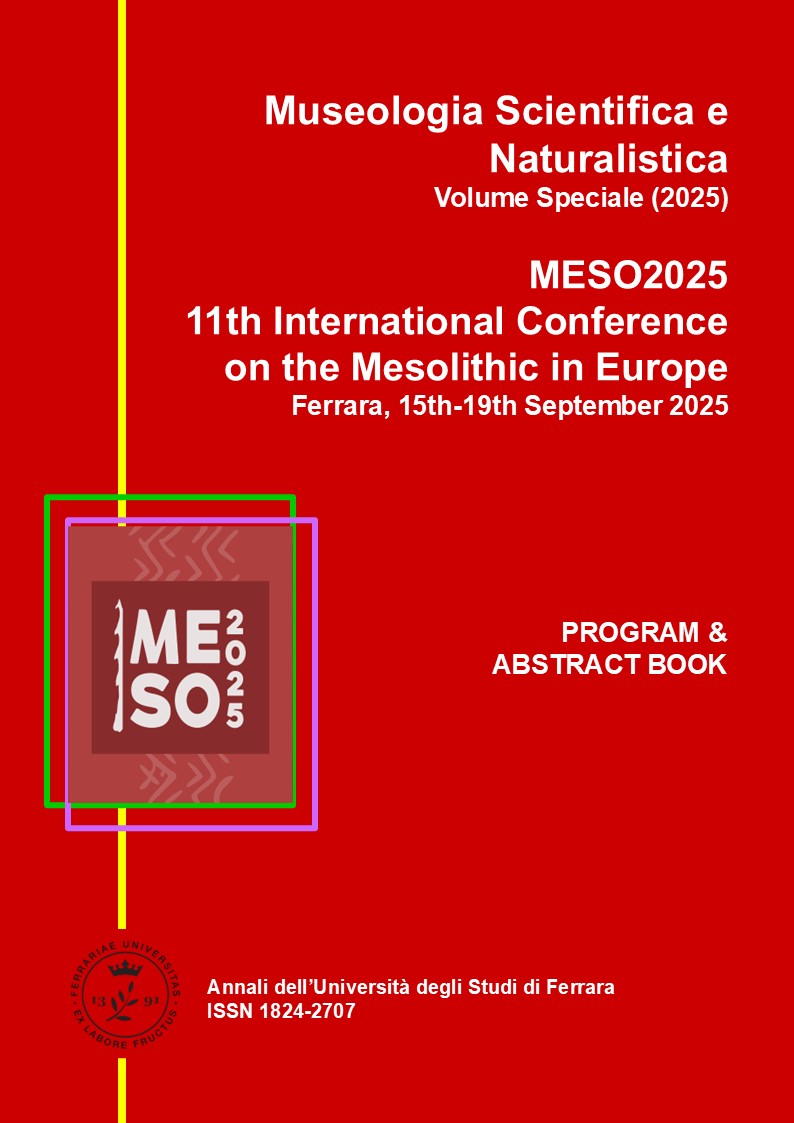MESO2025 - Session 4. People and their environment
Coordinated by Auréade Henry and Harry K. Robson
DOI:
https://doi.org/10.15160/1824-2707/3086Abstract
The nature of the relationship’s hunter-gatherer-fisher societies had with their natural environment is key to understanding their “being-in-the-world”. Indeed, while organic remains reflect the palaeoenvironment, they also offer a unique insight into daily subsistence strategies, settlement patterns, mobility, techniques, health, worldviews and cultural traditions.
Throughout the Mesolithic, the use of plants and animals has some uniformity and great heterogeneity over time and space, reflecting the diversity of environmental and socio-economic interactions at play. Although central, the place of organics within Mesolithic societies remains difficult to grasp due to taphonomic issues but also because historically, most remains of organic origin have received less attention than stone (and bone) artefacts that have been used as “diagnostic fossils” to define Mesolithic techno-cultural complexes.
Over the past decades, a range of techniques have developed, allowing us to identify “invisible” or undeterminable remains (e.g., through proteomics, microscopic or organic residue analyses), interpret incremental patterns (e.g., cementochronology), and traces (e.g., traceology on inorganic and organic remains, dental use-wear). These advances have broadened our interdisciplinary research frameworks and have significantly increased the body of knowledge about Mesolithic environments, used taxa and palaeoethnoecological practices.
This session deals with the interactions of Mesolithic humans with their biological environment, focusing on how specific components of this environment were acquired, prepared/transformed, used and/or discarded, and what these actions may have implied in societal terms (economy, social organisation, territories, seasonality, diet, etc.). We welcome contributions dealing with palaeoenvironmental, palaeoclimatic and/or palaeoeconomic reconstructions based on plant, animal, fungal or bacterial remains.



